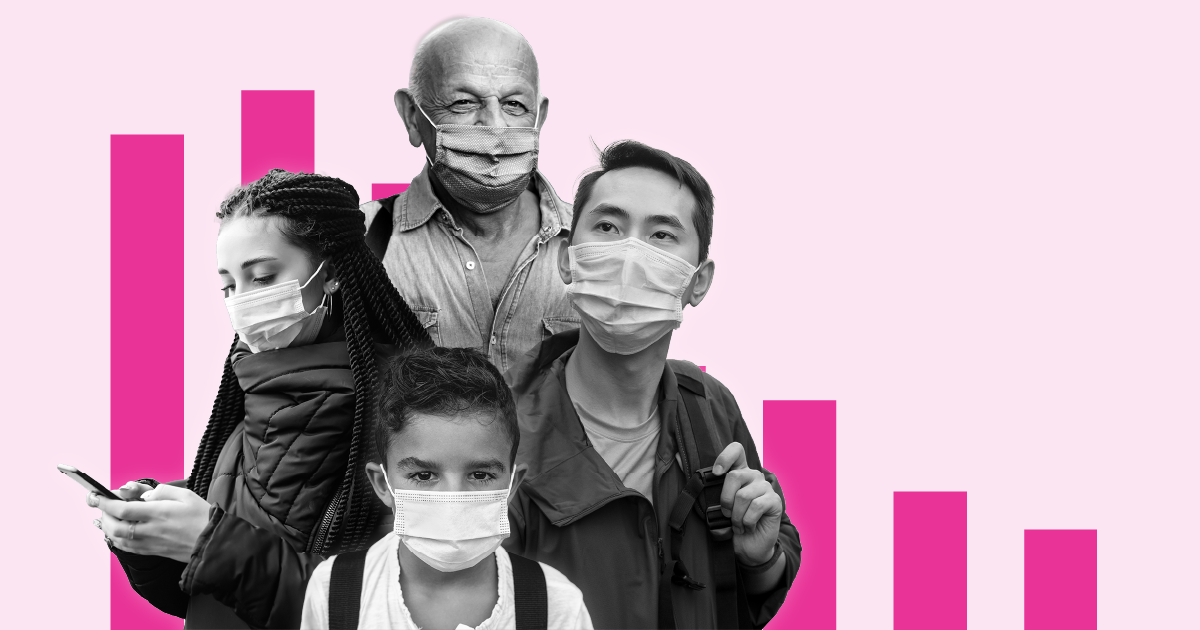Health
What health conditions make people more vulnerable to COVID-19?

In North Dakota, there was one confirmed in November for every 22 residents. Since the start of the pandemic through November 30, the state had 77,825 confirmed cases or one for every 10 residents.
November’s case count nationwide of 4.3 million more than doubles the previous monthly high of 1.9 million in July. While the newly reported case count fell in the last few days of the month, it’s important to note that the Thanksgiving holiday may delay data reporting, as explained by the Arizona Department of Health Services.
All but nine states had a record monthly number of new cases in November. North Dakota, South Dakota, Wyoming, and Iowa had the highest monthly case rate. Each of those states recorded more than 3,000 cases per 100,000 residents.
New COVID-19 cases per 100,000 people
Coronavirus-related deaths in November increased 36% to 36,240 from 23,090 the month before. Five states — Texas, Illinois, Michigan, Florida, and California — accounted for 31% of all deaths in the month.
While November data showed fewer deaths in November than the 57,801 COVID-19 deaths in April, the number of people hospitalized due to COVID-19 on November 30 was 102,579. That’s 94% higher than the number of people hospitalized due to COVID-19 on October 31 and the highest since at July 1, based on data from the Department of Health and Human Services.
Black Americans were particularly hard hit by fatal cases in the first wave of the virus in April, while deaths in the second wave affected Hispanic Americans more than other racial and ethnic groups.
As of December 2, as many as 249,570 Americans have died of COVID-19. Just over 2.6 million Americans have died in total since February 1, meaning that COVID-19 has made up about 9.5% of all deaths so far this year.
Not all Americans have been equally affected by the coronavirus death toll. In June, USAFacts reported that Black Americans made up 13% of the US population despite making up approximately 23% of the first 100,000 COVID-19 deaths. As the nation has faced more deaths, disparities have decreased — Black Americans now account for 18.7% of COVID-19 deaths — but still persist.
The CDC releases weekly provisional death counts of COVID-19, and while there is data as of November 14 available, data in the past eight weeks is incomplete, meaning that the total does not reach the total death count currently being reported by state and local agencies. However, the data provides insight about how the impact of the virus has changed over the past eight months.
The first wave of the virus peaked in April, hitting New York especially hard. Black Americans faced more than twice the deaths per 100,000 people during that wave than did Asian, Hispanic, and white Americans. For example, during the week of April 11, 4,459 Black Americans died of COVID-19, meaning a death rate of 10 per 100,000 people, yet Hispanic and white Americans faced death rates of 5 per 100,000 or below. In the second coronavirus wave, when deaths peaked in late July and early August, Hispanic Americans faced the highest death rates of any group — with around 4 out of 100,000 dying each week. Black Americans faced the second-highest rates.
While the data is not yet complete enough to comment on the third wave of COVID-19, deaths among white Americans are on the rise, which could be tied to increasing case counts in majority-white areas of the country. However, this may also be due to data reporting from majority-white jurisdictions being more complete in recent weeks than other areas.
The pandemic 's toll also includes the deaths of people who did not receive needed medical care while hospitals were burdened with COVID-19 patients. Excluding deaths due to COVID-19, deaths from other causes are above 2015-2019 averages for all groups, especially for Black Americans during the first wave of the virus.
Approximately 58% of the COVID-19 deaths captured in the provisional weekly data were among individuals 75 and over, despite this group only making up 7% of the population. So far, about 3% of deaths have been among individuals under the age of 44.
COVID-19 deaths were particularly concentrated among Americans 75 and older in May, at the end of the first wave of deaths. The second wave of deaths was more evenly split between older and younger Americans, but preliminary data from the recent increase in deaths indicates that deaths may again be becoming highly concentrated among the population 75 and older. More will be known in the coming weeks as death data may take one to eight or more weeks to be processed by the CDC, and completeness varies from jurisdiction to jurisdiction.
From November 19 to November 25, an average of 979,983 people passed through airport checkpoints daily. While that’s the highest seven-day average since mid-March, it is 59% lower than the daily average of 2.4 million during the same week in 2019.
The airline industry has partially recovered since spring. US airlines carried 25.1 million passengers in September, up from 3 million in April, but 65% below the 71.5 million in September 2019.
Airlines and businesses supporting airlines have received more than $50 billion in grants and loans since the pandemic began, primarily through the CARES Act, which provided passenger airlines with $25 billion to cover payroll costs. Companies that received CARES Act funds were barred from layoffs, pay reductions, or furloughs until September 30.
Between mid-September and mid-October, US airline employment (both full-time and part-time) dropped to 673,278, down 4% from September employment of 702,068, according to the Bureau of Transportation Statistics.
See more data about COVID-19 cases and deaths or follow the economic situation on the Impact and Recovery Hub.
Health
Health
Health
Health
Newsletter
Keep up with the latest data and most popular content.


